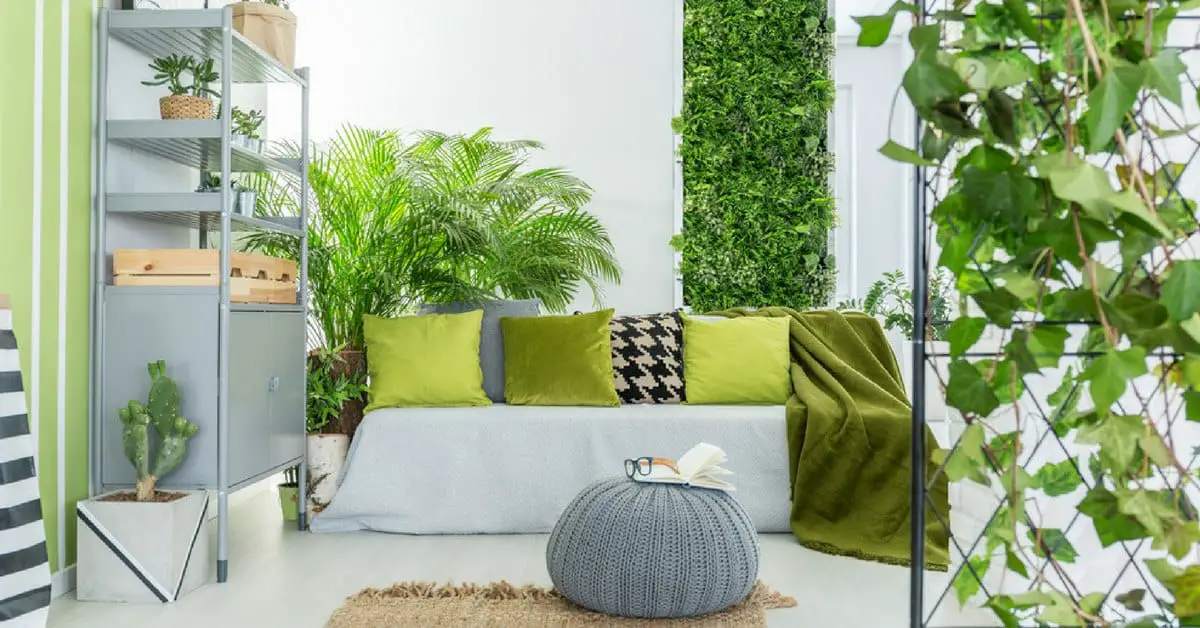In the busy cities we live in now, the desire to bring nature into our homes has never been greater. However, for people living in small areas, the idea of caring for a traditional garden can be overwhelming. Don’t worry because vertical garden ideas are the answer. They are a creative and space-saving way to grow your plants.
Start Vertical Gardening
Vertical gardens, also called living walls or green walls, are a modern and beautiful way to grow plants when you don’t have a lot of flat space. With these creative designs, you can create a healthy garden on your balcony, terrace, or even at home. Not only do they make your space feel more natural, but they are also incredibly useful.
Make the Most of a Small Space
The great thing about vertical gardens is that they make the most of small spaces. You can turn any small space into an oasis if you use vertical surfaces such as fences, walls, or hanging structures. This is especially useful for people who live in apartments or have smaller outdoor spaces. This shows that just because there isn’t much space doesn’t mean there aren’t any plants.
Adaptable and Beautiful
One of the great things about vertical gardening is that you can use it in so many different ways. They come in all kinds of shapes and styles, so you can be as creative as you want. You can use modular planters for a sleek, modern look, or use trays for other items for a more rustic look. This customization ensures that your vertical garden not only grows well, but also fits in with the rest of your design.
Purify the Air and Benefit From your Health
Another advantage of vertical plants is that they help purify the air. Adding plants to your home can improve the health of everyone who lives there because they naturally purify the air. Clean air is good for your health in many ways, such as reducing stress and helping you sleep better.
Easy to Maintain and Great Effect
Many people think that vertical gardens are difficult to maintain, but this is not always the case. Many new designs have automatic watering systems, making caring for your oasis easier than ever. This feature makes it easy to maintain, so even busy people can enjoy the benefits of well-growing plants.
The Best Way to Live More Sustainably
The use of vertical gardening is also in line with the global shift towards a greener lifestyle. By creating a vertical garden, your environment not only looks more beautiful, but the world also becomes greener. These small environments are important for storing carbon, slowing climate change one plant at a time.
How much Fun is it to Make Something at Home?
Imagine picking fresh herbs to cook or eating a salad made from vegetables you grow in your living room. In a vertical garden, you can grow your herbs, fruits, and vegetables. This gives you a sense of joy and satisfaction that store-bought food can’t match. Now you’re done: a small but enjoyable step towards independence.
A Look Suitable for Social Media
In the age of social media, how things look matters. Vertical gardens are a great way to show that you care about the environment, and they also look great as a photo backdrop. Imagine getting so many likes and shares for your green work, inspiring others to live in an eco-friendly and stylish way.
DIY Fun
A fun DIY project is making vertical plants. Choose plants that speak to you and arrange them in a way that reflects who you are. This will help you unleash your creativity. Using old wooden planks to create something new or making your planters, creating a vertical garden is as satisfying as watching it grow.
Conclusion
All in all, vertical plants are more attractive than their appearance. The beauty of nature and the reality of sustainable living come together in this lifestyle. As you begin your journey to greening, remember that every leaf and vine helps make the world a better place. Grow your plants and watch your study become a symbol of eco-friendly and stylish living.
FAQs
1. What is a vertical garden? How does it work?
Vertical gardens, also called “living walls,” are a way of gardening by growing plants up and down walls, fences, and other vertical structures. It usually uses a system of modular planters, bags, or hanging containers that allow plants to grow up and down.
2. Can I grow vertical plants indoors?
Certainly! Many vertical garden ideas can be used indoors. You can hang containers from the ceiling or plants on the wall, or build a structure with freestanding shelves. Make sure the plants you choose get enough sunlight or choose a type that can be grown indoors.
3. How do you create a hanging garden? Which plants are best for it?
The best plants for your vertical garden depend on where you live, the weather, and how much sunlight you get. But plants, herbs, ferns, and climbing plants are all popular choices. Choose plants that grow well in a vertical arrangement and thrive in their environment.
4. How do you keep the hanging garden in good condition?
Although vertical gardens require less maintenance, they still require regular maintenance. You need to give your plants the right amount of water, sunlight, and nutrition. Many vertical garden designs have built-in irrigation, which makes watering easier. Prune and prune as necessary to keep your garden healthy and beautiful.
5. Can I create my vertical garden, or is it better to buy a ready-made vertical garden?
Both options are great! If you are a do-it-yourselfer, there are many guides and other resources available for creating your vertical garden. However, if you would prefer to have something already made, many prefabricated vertical garden systems on the market are convenient and easy to set up.
6. Are vertical plants good for the environment?
Yes, vertical gardens help keep the planet healthy. They help plants and animals live together, purify the air, and can even be used as green infrastructure in cities. Growing your herbs and vegetables in a vertical garden can also reduce the need to buy food from the store, supporting a more environmentally friendly lifestyle.

